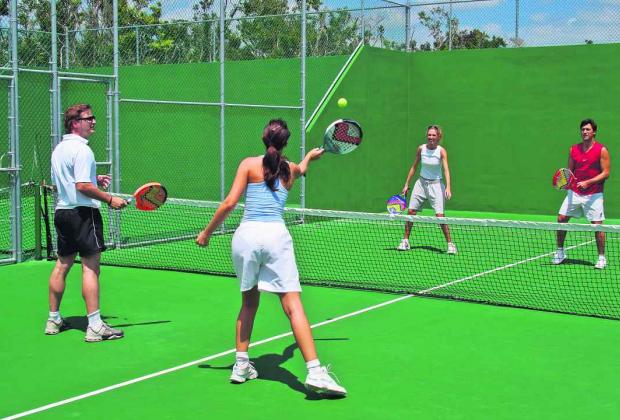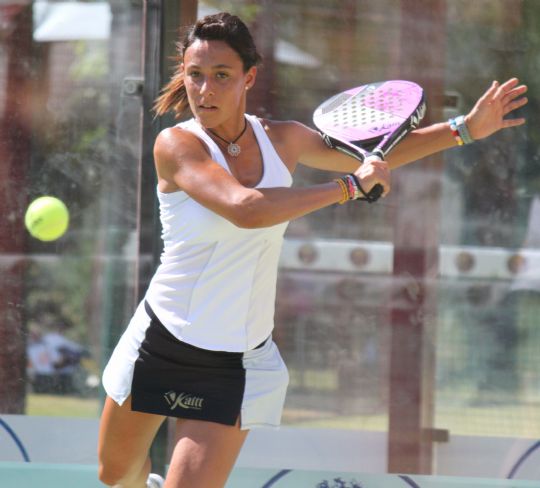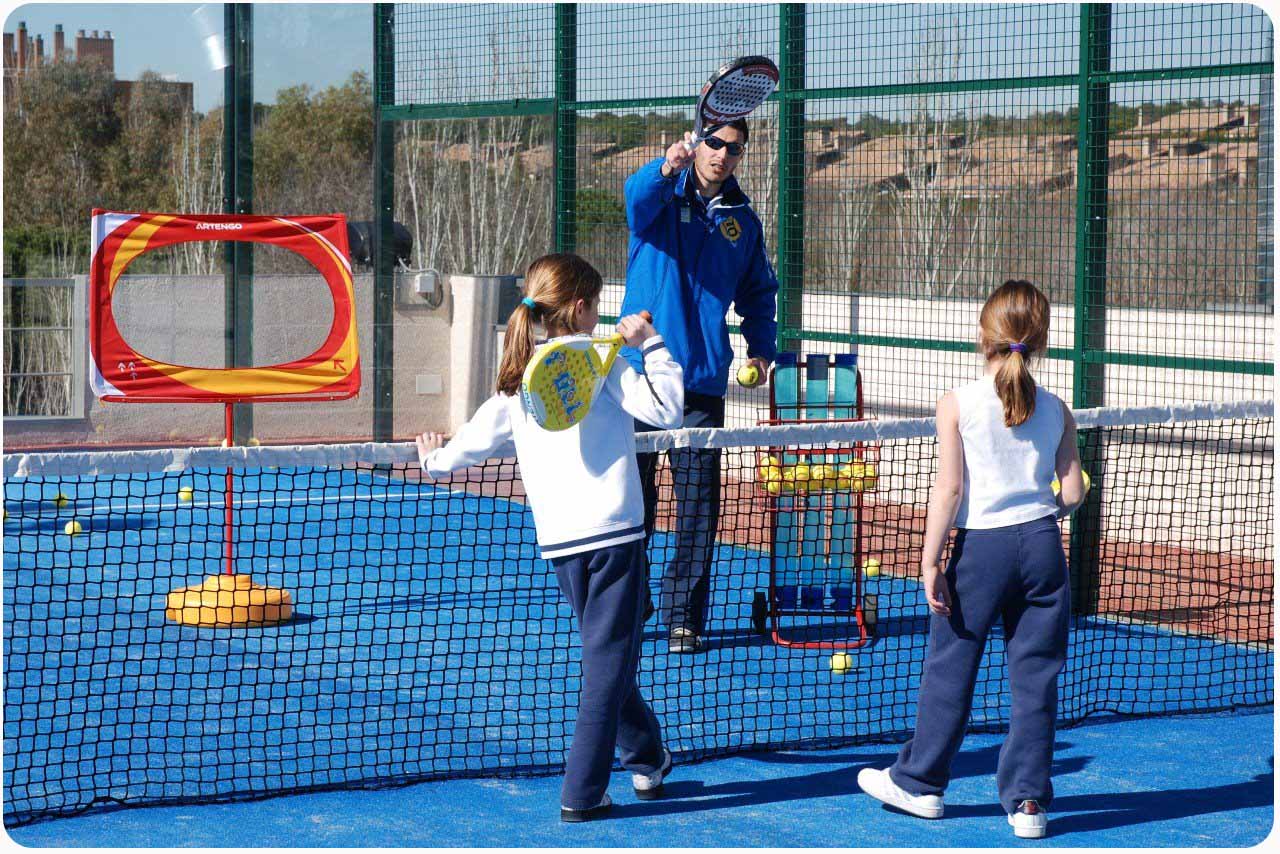- Home
- What is neuropsychology
- Neuropsychology of Padel
Neuropsychology of Padel sport
Ga HIER naar de Nederlandse versie van deze pagina

Padel sport is one of the fastest growing sports in the Netherlands and even in the World. Below I would like to explain why it is such a fantastic sport. Padel, also known as Padel-tennis, actually is a mix between tennis with a bit of squash. It is played on a smaller court than tennis, with the rules of tennis but the walls (sides and back) may be used during the game. Look for some videos of Padel on Youtube.
Padel is good for your brain: more challenges
You could say that is true for every (group) sport. Of course, you are right. But I will focus here on Padel simply because I like this sport very much.
Padel is a ball game and that means the sport contains speed. The speed of the ball, the speed of tactical changes between players, the speed of different ball changes. All much more than in tennis. That has a lot to do with the fact that the court is smaller and you are more close to each other (normally Padel is played 2 against 2). Also, the ball has less velocity than in tennis so there is a much better chance that your opponents can return the ball. Third, the walls may be used. Because of this rule, the ball keeps rolling: it stays much longer in the game without many dead (dull) moments. In tennis, lots of times the ball is out and has to be fetched again (a lot of pauses in tennis).
Mentally, this higher speed and changes in Padel means that the brain has to calculate more and quicker where the ball comes and what actions have to be taken to return the ball. Padel clearly is more dynamic than tennis (double) but less so than squash. Your brain is challenged more than in tennis.
But just because Padel is easier to play and learn than tennis because less physical strength and technical capacities are demanded, there is a fantastic combination between your brain challenged to its limits and your body that has to move a lot but not be as fit as in tennis. So there are more challenges in Padel but you don’t have to have extreme technical skills and so the challenges are more easily met in Padel.
More challenges means more adrenaline in your brain. More challenges met means more dopamine (reward center) and endorphines in your brain: you will get more rewards in Padel than with other ball games which are technically more difficult. That is the simple reason that once you have played Padel you get hooked to it much more easily. It is not uncommon that people who once try Padel get to play it more often and longer than any other sport they used to do. This is already so after 1 hour of getting used to Padel!
More visuo-spatial challenges
So, Padel is one of the easiest ball games: every child learns Padel in less than an hour. With tennis you will need several lessons taking up to several months to play it; not with Padel. So, Padel gives you a self confidence much quicker than tennis or hockey.
Because in Padel a lot of eye-hand coordination is required, the visuo-spatial capacities of your brain are trained. Of course, that is the case with tennis as well. However, Padel is easier than tennis so the visuo-spatial training is more intense and frequent than in tennis. Simply because you do get more rallies between players. Because the Padel racket is shorter than the tennis racket (so closer to your body and hand) it is closer to your so-called personal space (reaching space).
This personal space is very well represented and trained in your brain because of its frequent use everyday. Therefore it is handled much more easy than the extra-personal space in which the tennis racket is moved much more. It takes considerable more practice to hit a (high velocity) ball correctly with a longer tennis racket (and smaller blade) than with a Padel racket.
Another factor intensifies the visuo-spatial training in Padel more than in tennis: the use of the walls. In Padel there are many more bouncing effects (and calculations for your brain to make) then in tennis, so it is more challenging for the brain. This makes it more exciting as well: more adrenaline and alertness is called for than with just a ball out.
In Padel with a strong ball of your opponent you always have 2 chances: 1. Returning the ball directly after it has hit the floor or 2. Just wait and hit the ball after it bounces off the back wall. The second route gives you more time to react and is especially used by somewhat slower people (e.g. elderly, children). That’s why Padel is very friendly for elderly and younger children.
More friendly and fun
As for concentration: this is trained excellently in Padel, as in every ball game of course. However, due to the fact that the ball stays much longer in the game (there are less dull moments) there is more need for adrenaline and dopamine, two of the known neurotransmitters to boost your attention. So Padel leads to a longer and more intense training of your concentration. Also more volleys at the net are possible in Padel because the ball has less speed than in tennis double. So again: more adrenaline and dopamine. Thát is also the subjective experience of people playing Padel.
More fun also means that there can be more laughs at Padel and that as well is the experience many players of Padel have. More laughing means that the social interactions between players are running more smoothly, much more relaxed. Therefore, people are less touchy in Padel and even more competitive players are more emotionally ‘normal’ than with other competitive ball sports.
Whenever someone playing Padel is frequently aggressive, it is my experience he/she has an underlying emotional problem (or had less sleep lately). Or...this player has clearly not understood what it means to play a GAME. A game is per definition an activity you do to have FUN with other people, not to engage in a 'fight' and try to devaluate other players by just focusing on winning. There is a huge difference between playing (and having fun) and winning!
Just imagine what gives you as a player or even your spectators more fun: winning in straight numbers (e.g. 6-2, 6-0), or winning just barely (6-5, 6-7, 6-5).
Padel
actually stimulates parts of the brain that can regulate emotions (e.g.
prefrontal cortex). Another reason why Padel is more social than other
ball games is that the levels of competence can differ more. Even though the
competence levels differ quite a lot, you can always have nice rallies in
Padel. Of course, there always is a limit but this is reached later than
with tennis double. And it also depends on the mind set of the Padel player. If he/she just wants to finish it off, because there is a clear level difference between the opponent, then the match is not fun and even boring. But adjusting your level a little bit could mean much longer rallies, so much more running, more challenges to your endurance and to your consistency of strokes. Thát is what playing a game is all about: fun!
Controlling your emotions

Another essential aspect of Padel is learning to control your emotions (impulses). Learning to control or regulate your emotions is even more important in Padel than in tennis or other ball games. Just because Padel seems so easy the urge to hit more difficult balls is much higher. But hitting hard has not much use in Padel simply because the ball is bounced back by the back walls and a return is relatively easy for an opponent. Also, hitting hard makes it even tougher to get the ball on the floor first. That is why you see a lot of slices in Padel when you look at matches. Padel teaches you more to place a ball more precisely.
Last but certainly not least: the executive functions are much better trained in Padel. These are the more tactical functions (planning, self-control) In your brain. A tactical well placed ball is always better (and even essential) in Padel than hitting hard. Due to the fact that the ball is returned much more easily than in tennis, more emphasis In training will be on slower well-placed balls. This trains the excellent (emotional) control of yourself and the ball. Probably Padel can be a good training for people with ADHD: learning to control their emotions, planning more and trying to concentrate more.
Padel is much like a family sport
Officially Padel has to be played with 4 players, 2 against 2. More social interaction is possible because you stand more closely together on a smaller court. As said before, playing Padel probably uses more dopamine (more rewarded challenges) than other more difficult ball games. People’s mood will be better, there so-called defense systems will be more relaxed (exceptions are with personality disturbed players who of course are amongst Padel players as well). So normally, Padel has more positive social interactions than with other more demanding ball games.
In Padel level differences are less important to still get a nice match. It is more forgiving than tennis: less dead (dull) moments, more balls hit correctly. Actually, the time you spend together in a happy mood and being more active, increases the social bond stronger than in a match with a lot of faults and dead moments.
That is why Padel can be played with youngsters, elderly, children, all together. Technically less challenging, more ball contact, everybody likes that. Padel is an ideal family sport.

Padel is good for your body
Better for your knees:
Padel does challenge your heart-lung condition because the ball is rolling much longer than with tennis. However, the court is smaller and with 4 players you have to run less than in tennis double or squash. So there is less strain on your knees. Actually, that is why a lot of elderly can play Padel with more pleasure than tennis.
Better for your spine:
Padel’s court is smaller, the walls can be used, the speed of the ball is less, so there are less difficult and slower turns possible in Padel. That gives less strain on your back. Also, in Padel it is NOT allowed to serve overhand, it has to be done after bouncing the ball once and underhand. This puts much less strain on your back.
Better for your shoulders:
Due to the service which is exclusively underhand, there are much less shoulder injuries than in tennis.
Better for your wrist and elbow:
The speed of a tennis ball and the higher tension on a tennis racket put much more strain on your arm, wrist and elbow when returning the ball. In Padel, the velocity of the ball is less, the blade is much closer to your wrist and body so there is less force on these parts of your body. There are much less known reports of Padel players having problems with their wrists or elbows. Of course, when playing extremely frequently even in Padel these problems can occur, but less often than with tennis.
Padel better for the elderly and people with injuries:
Padel puts much less strain on your body parts than tennis, squash or even hockey. Whereas in these sports a lot of ankle, back or shoulder injuries are seen, in Padel this is hardly the case. Up till a very high age you could play Padel without serious physical problems. At the same time it still challenges your total body: all muscles are involved and your heart/lung condtion is being challenged as well.
Padel better for your eyes:
Although eye injuries are rare in tennis as well, in Padel due to a smaller ball speed, there is a lesser chance of a serious eye injury. Furthermore, control of emotions and more emphasis on ball placement even make it harder to hit someone in the eye.
Padel can both be played indoor as well as outdoors.
In summary: Padel is a very safe sport in which injuries are rare if you are prepared and warm and exercise regularly. But that is guaranteed because it is a very fun and addictive sport to play!
CAVEAT:
Since I posted this article in 2015 on a now extinct website, I must admit that the above is not entirely true. When OVERDOING Padel it can actually lead to more injuries. Because it is so addictive, I myself played many times way too long that lead to several knee, calf and achilles injuries. So here as well the famous rule is: be moderate! :)
Have A Great Story About This Topic?
Do you have a great story, remarks or any additions to or about this? One that could help other people as well and above all is constructive? Then please share it!
DISCLAIMER
I will not take any responsibility for how the information on this website will affect you. It always remains your responsibility to handle all information with care and in case of medical or mental problems you should ALWAYS consult a professional in your neighbourhood!
Ik neem geen enkele verantwoordelijkheid voor hoe de informatie op deze site u zal beïnvloeden. Het blijft altijd uw verantwoordelijkheid om al deze informatie zorgvuldig te bekijken. In het geval van lichamelijke en/of mentale problemen dient u ALTIJD een professional in uw directe omgeving te waarschuwen!